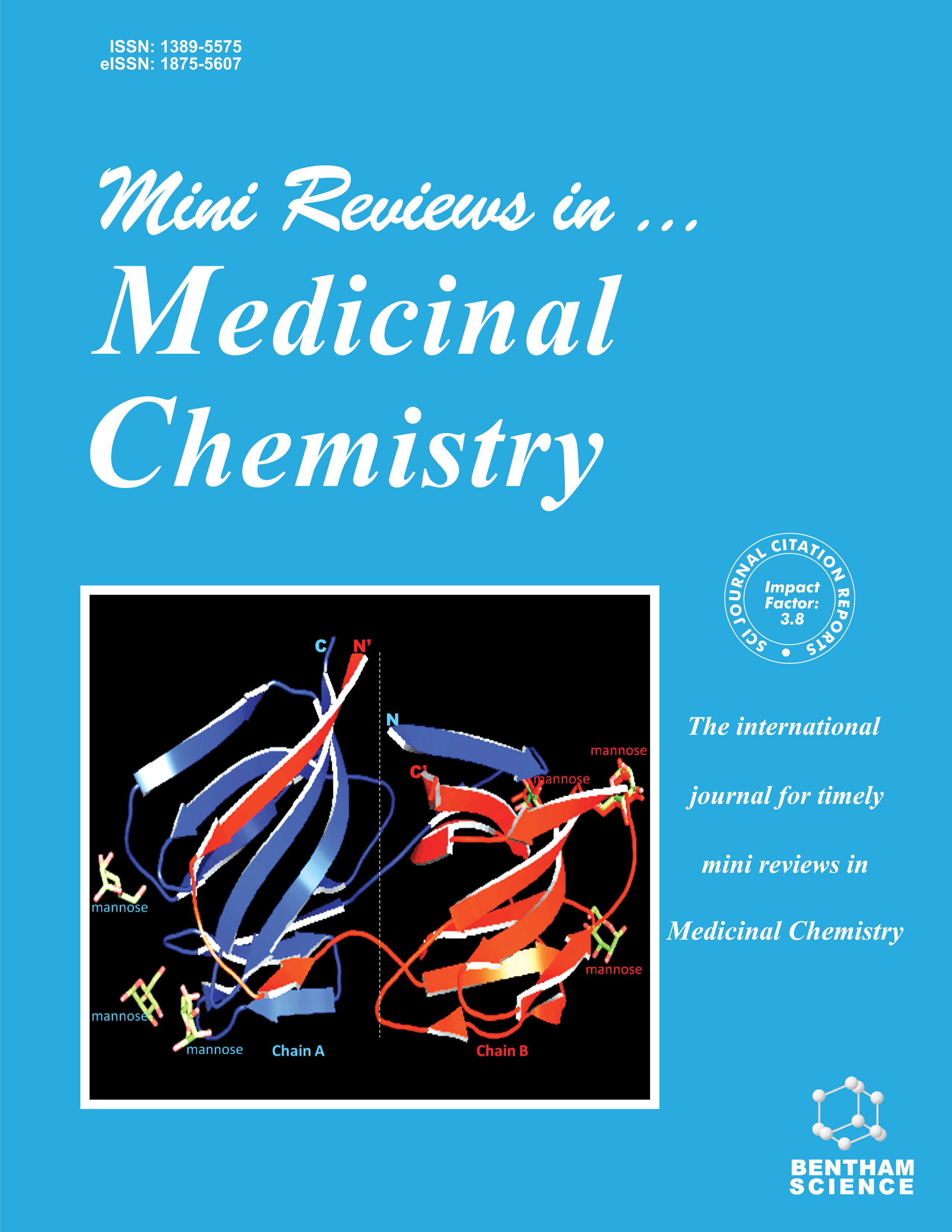- Home
- A-Z Publications
- Mini Reviews in Medicinal Chemistry
- Previous Issues
- Volume 17, Issue 13, 2017
Mini Reviews in Medicinal Chemistry - Volume 17, Issue 13, 2017
Volume 17, Issue 13, 2017
-
-
Understanding Plastid Vesicle Transport – Could it Provide Benefit for Human Medicine?
More LessAuthors: Nadir Zaman Khan, Emelie Lindquist, Mohamed Alezzawi and Henrik AronssonBackground: In plants, vesicle transport occurs in the secretory pathway in the cytosol, between the membranes of different compartments. Several protein components have been identified to be involved in the process and their functions were characterized. Both cargos and other molecules (such as hormones) have been shown to use vesicle transport, although the major constituents of vesicles are lipids which ar Read More
-
-
-
Carotenoids of Microalgae Used in Food Industry and Medicine
More LessAuthors: Helene Gateau, Katalin Solymosi, Justine Marchand and Benoît SchoefsBackground: Since the industrial revolution, the consumption of processed food increased dramatically. During processing, food material loses many of its natural properties. Objective: The simple restoration of the original properties of the processed food as well as fortification require food supplementation with compounds prepared chemically or of natural origin. The observations that natural food additives are safer and b Read More
-
-
-
Phycobilins and Phycobiliproteins Used in Food Industry and Medicine
More LessAuthors: Beata Mysliwa-Kurdziel and Katalin SolymosiBackground: Open tetrapyrroles termed phycobilins represent the major photosynthetic accessory pigments of several cyanobacteria and some eukaryotic algae such as the Glaucophyta, Cryptophyta and Rhodophyta. These pigments are covalently bound to so-called phycobiliproteins which are in general organized into phycobilisomes on the thylakoid membranes. Objectives: In this work we first briefly describe the physico-c Read More
-
-
-
Chlorophylls and their Derivatives Used in Food Industry and Medicine
More LessAuthors: Katalin Solymosi and Beata Mysliwa-KurdzielBackground: Thylakoids and chloroplasts harbor several vital metabolic processes, but are most importantly associated with photosynthesis. The undisturbed functioning of this process necessitates the ceaseless synthesis of photosynthetic pigments, including closed tetrapyrroles such as chlorophylls (Chls). Chls probably represent the most abundant natural pigment molecules which are via photosynthesis not only crucial Read More
-
-
-
Cannabis: A Treasure Trove or Pandora's Box?
More LessAuthors: Katalin Solymosi and Attila KöfalviBackground & Objective: Cannabis is one of the earliest cultivated plants. Cannabis of industrial utility and culinary value is generally termed as hemp. Conversely, cannabis that is bred for medical, spiritual and recreational purposes is called marijuana. The female marijuana plant produces a significant quantity of bio- and psychoactive phytocannabinoids, which regained the spotlight with the discovery of the endocannabinoi Read More
-
-
-
Plastid Molecular Pharming I. Production of Oral Vaccines via Plastid Transformation
More LessAuthors: Bernadett Berecz, Helga Zelenyánszki, Sara Pólya, Cecilia Tamás-Nyitrai and Maria OszvaldBackground: Vaccines produced in plants have opened up new opportunities in vaccination. Objective: Among the various categories of vaccines, the recombinant vaccine is generally regarded as the most economical and safest type because it cannot cause disease and does not require large-scale cultivation of pathogens. Due to the low cost of their cultivation, plants may represent viable alternative platforms for produ Read More
-
-
-
Plastid Molecular Pharming II. Production of Biopharmaceuticals by Plastid Transformation
More LessAuthors: Sandra Bains, Petter Larsson and Henrik AronssonBackground: Higher plants have been used in medicine throughout human history. Method: While traditional medicinal uses relied on compounds produced naturally by plants, recent advances have enabled the use of plant-based factories to produce diverse agents including pharmaceuticals, antibiotics, and vaccines. The genes responsible for the production of these substances can be either transiently expressed in plants or i Read More
-
Volumes & issues
-
Volume 25 (2025)
-
Volume 24 (2024)
-
Volume 23 (2023)
-
Volume 22 (2022)
-
Volume 21 (2021)
-
Volume 20 (2020)
-
Volume 19 (2019)
-
Volume 18 (2018)
-
Volume 17 (2017)
-
Volume 16 (2016)
-
Volume 15 (2015)
-
Volume 14 (2014)
-
Volume 13 (2013)
-
Volume 12 (2012)
-
Volume 11 (2011)
-
Volume 10 (2010)
-
Volume 9 (2009)
-
Volume 8 (2008)
-
Volume 7 (2007)
-
Volume 6 (2006)
-
Volume 5 (2005)
-
Volume 4 (2004)
-
Volume 3 (2003)
-
Volume 2 (2002)
-
Volume 1 (2001)
Most Read This Month
Article
content/journals/mrmc
Journal
10
5
false
en


